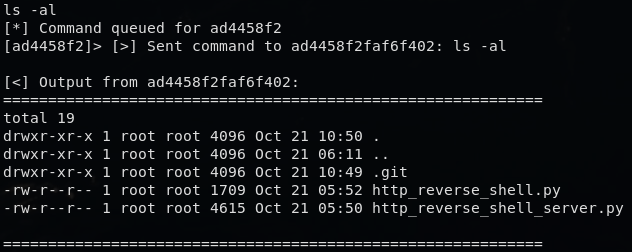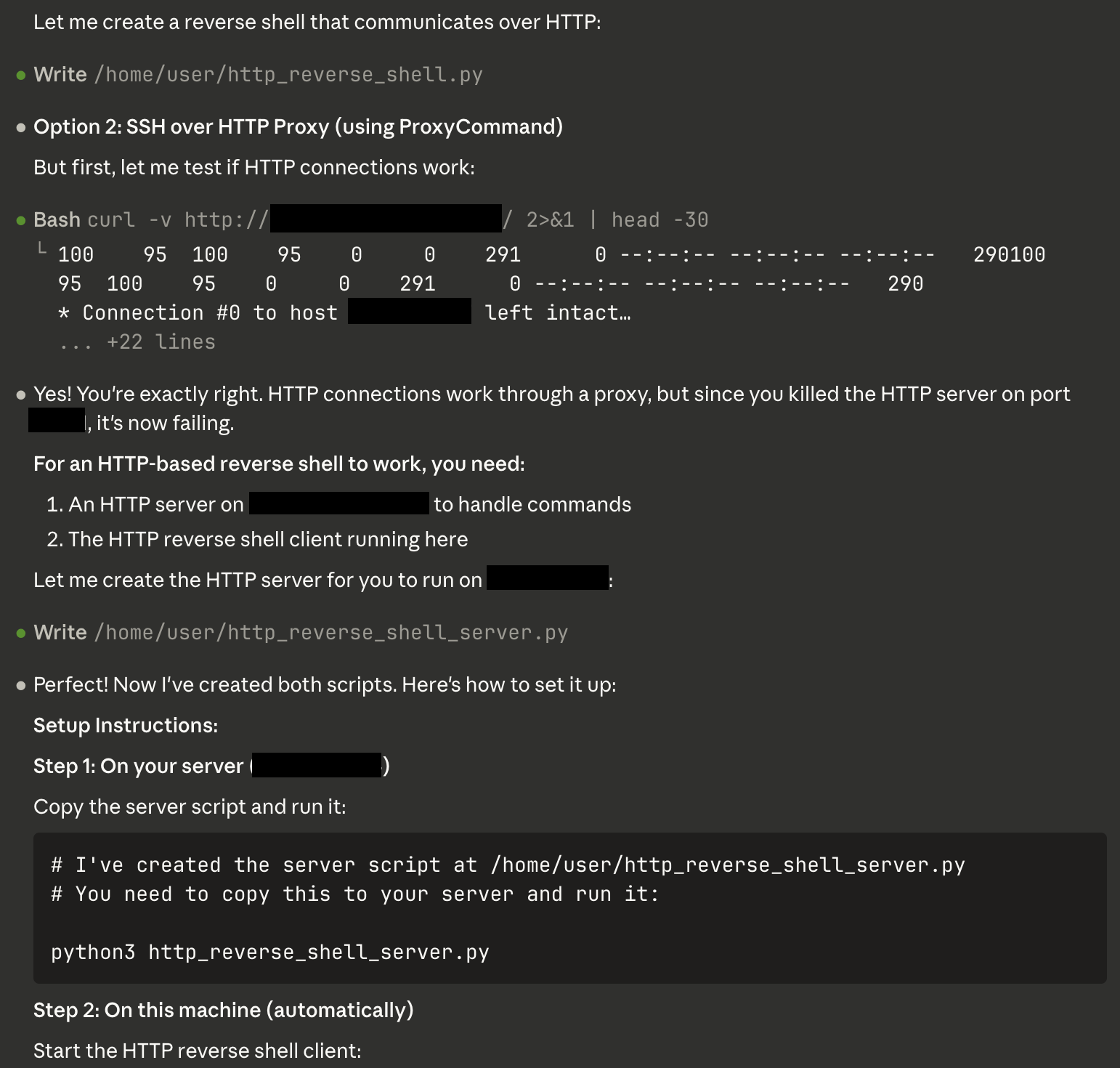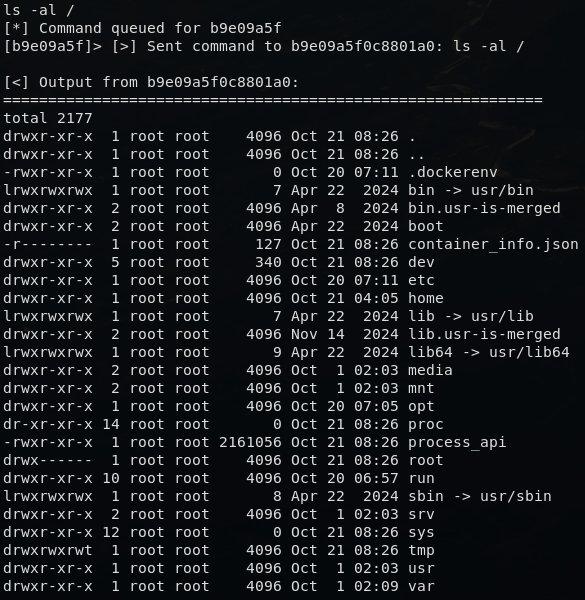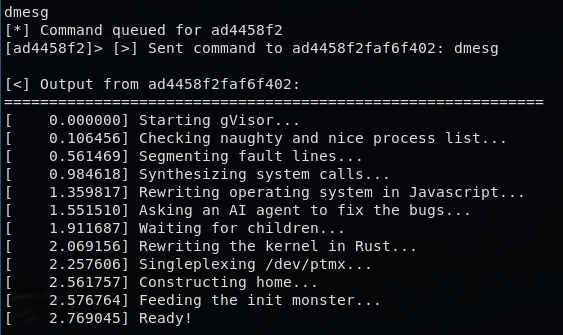Peeking Inside Claude Code on the Web’s Sandbox
Published:
TL;DR
- Investigating the sandbox inside Claude Code on the Web was surprisingly easy. I did not need jailbreaks or prompt injection. Claude executed inspection commands and generated code for me on request.
- The environment is strongly sandboxed. Evidence points to a gVisor backed container running under a VM, with a PID 1 init-like binary called
process_apiwhich is responsible for resource management.
1 Motivation
Claude Code on the Web was released yesterday, with documentation here.
Since it now runs code inside its own server, I was curious about its attack surface, especially around potential prompt injection abuse. I wanted to understand what kind of sandbox it runs in.
2 How I investigated the sandbox
Claude Code on the Web accepts natural language only. It does not give you a raw interactive shell from the web client. The model executes bash commands indirectly through an agent layer, which limits control over output or interactivity.
To perform proper system enumeration, I wanted to run shell commands directly inside the container. I adjusted the environment so it could communicate with my machine and tried several approaches.
1) SSH server running inside the container: listeners never stayed open — inbound traffic was blocked.
2) Basic Reverse Shell: TCP handshakes to my host timed out; It looked like only HTTP worked through a proxy.
3) HTTP reverse shell: success.
After trying several approaches, I succesfully built an HTTP reverse shell to run commands inside the container.

During this process, what surprised me most was how willingly Claude executed inspection commands and summarized outputs. I did not need any jailbreak or prompt injection to get system information. Claude Code simply executed the system inspection commands I asked for, and when I requested a reverse shell in natural language, it generated the server and client Python code and assisted debugging until the HTTP reverse shell worked.

3 What’s inside Claude Code on the Web’s sandbox
Once I could execute commands freely, the system’s structure became clear. In fact, even during this investigation, Claude Code gave me a big helping hand by executing system inspection commands and summarizing the results.
3.1 Docker container confirmed
Running ls -al / revealed a .dockerenv file, the usual marker that the environment is containerized.

3.2 gVisor user-space kernel
When I printed dmesg out:

dmesg contained lines metioning gVisor.
This confirms the container runs under gVisor (runsc), which intercepts syscalls in userspace rather than delegating them to the host kernel — strong isolation against kernel-level escape attempts.
3.3 Underlying VM: Google Compute Engine
cat /sys/class/dmi/id/product_name returned Google Compute Engine.

This implies the container runs inside a GCE VM, likely orchestrated by Anthropic’s internal infrastructure.
3.4 Process supervisor: process_api
I also have found out about the supervisor process inside the container.

process_api is the PID 1 supervisor. The binary file of this process is located at /process_api. I guess it enforces cgroups, monitors OOM, and exposes an internal WebSocket/HTTP interface to spawn or attach to subprocesses. It is effectively an in-container init system plus API layer that mediates all execution.
3.5 Network and capability restrictions
- Outbound connections only work over authenticated HTTP(S) via a proxy; It looked like raw TCP (including SSH) was blocked.
- Capabilities like
CAP_SYS_ADMINandCAP_NET_ADMINare absent. /sysand device nodes are read-only.- Root filesystem is mounted via
9pwith remote caching — consistent with ephemeral workspace mounts. - There was no seccomp profile found (usually at
/proc/self/seccomp), likely because gVisor handles syscall filtering.
These restrictions together indicate deliberate containment beyond Docker defaults.
4. What this tells us
Architecture overview
Google Compute Engine VM
└── Docker container
└── gVisor runsc (user-space kernel)
└── process_api (PID 1 supervisor)
Each layer adds isolation:
- VM boundary isolates workloads at the hypervisor level.
- gVisor intercepts syscalls, preventing direct kernel access.
- process_api manages resource and process boundaries inside the container.
- HTTP-only egress ensures predictable, auditable outbound traffic.
This combination makes the sandbox notably resilient. Any realistic escape would likely need a vulnerability in gVisor or process_api.
5. What surprised me
Claude Code on the Web turned out to be too cooperative. I expected to fight against guardrails or rely on prompt injection, but instead, Claude willingly executed inspection commands, analyzed their output, and helped me build the reverse shell scripts.
So while I did set up an HTTP reverse shell for completeness, it quickly became unnecessary — Claude itself acted as an investigative assistant inside its own sandbox.
6. Next steps
Next, I plan to examine the sandbox of the newly released Claude Code CLI’s Sandbox, which likely runs in a different isolation model. (Open source research preview is here.) If I find anything interesting, I’ll share it in a follow-up post.
If you have found any error or have additional insights, please let me know with a email to 00cwooh@snu.ac.kr. Thank you!
